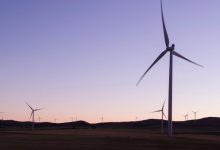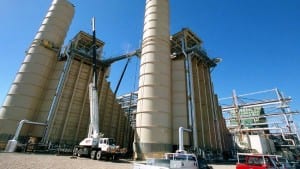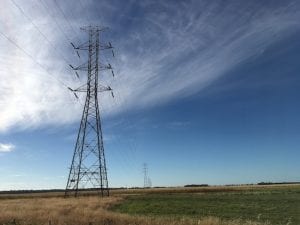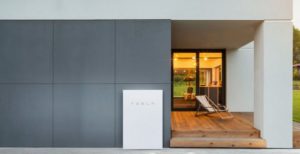The Australian Energy Regulator has backed away from making big changes to the way wind and solar farms bid into the National Electricity Market, and will now propose only a minor change that it hopes will still prevent un-announced shutdowns due to negative pricing events.
The compromise deal follows a strong response from the renewable energy sector, most of whom wondered why radical change was necessary, given the numerous other rule changes were also shortly to take effect, including the shift to five minute settlements.
They also pointed out that the AER’s preferred option was likely to increase costs to both wind and solar operators and consumers. They fiercely objected to one option that suggested wind and solar farms be forced to operate in the same way as scheduled generators such as coal and gas plants.
The issue was raised by the AER in June. One of its principal concerns was the growing trend of some wind and solar farms to suddenly withdraw capacity offered to the market when prices went negative, a situation that was making the AEMO’s job of managing the grid more difficult, and was causing big increases in ramp rates.
The AER proposed four different options, including the dramatic removal of the “semi-scheduled” category which applies to wind and solar, and settled on two different possibilities with a preference of giving wind and solar farms a megawatt target in each bidding interval.
As predicted by RenewEconomy at the time, the options provoked a fierce response, with wind and solar farms saying the rules amounted to yet another constraint on their output and would trim earning by up to five per cent in the case of solar farms, and three per cent for wind farms, and put the economics of future projects at risk.
“None of the options are acceptable,” said Neoen, which operates the Hornsdale wind farm, the Tesla big battery, a half dozen solar farms in NSW and Victoria, and which is building the country’s biggest solar farm in Queensland, and plans a massive $3 billion wind, solar and battery hybrid in South Australia.
“The proposed options appear to be heavy-handed solutions without regard for the commercial position of participants.”
Tilt Renewables said the megawatt target is not fit‐for‐purpose for the wind and solar industry. “It seeks to address a minor issue in the market with a major change,” it noted.
Infigen Energy said regulators should be looking to adapt the market to new technologies rather than attempting to “force” technologies to follow the market.
“The AER’s preferred options would potentially lead to costly outcomes for both generators and consumers that Infigen does not consider would be consistent with the National Electricity Objective.”
This was a consistent theme through the submissions, although it should be noticed that the big fossil fuel incumbents were by and large supportive of the move to tie down the wind and solar farms. “Dispatch targets for semi-scheduled generation should be no different to that of scheduled plant,” said the federal government owned utility Snowy Hydro.
However, the AER said the vast majority of submissions, and all of the oral feedback received, did in fact support the stopping the un-forecast generator response to negative prices, during an interval that did not correspond with a reduction in their resource.
The AER appears to have taken the comments by the wind and solar industry on board. It now proposes only a minor change to “formalise” the intent of the semi-scheduled generator category when it was introduced in 2005 but still expects it to achieve its goals.
This means that wind and solar farms will operate under a “cap”, decided by the dispatch engine according to all the other things going on in the grid, which could be at their rated output or a lesser number. The wind and solar farms will not be allowed to exceed that cap, and will be expected to dispatch subject to resource availablility, rather than sudden withdrawals due to negative pricing.
In other words, semi scheduled generators (wind and solar) would operate to the full availability of the resource when permitted by the power system. And they will be expected to provide the market operator with information about any possible impacts on their output from heat stress.
The new proposal will be taken back to stakeholders this week – the Australian Energy Council and then the Clean Energy Council members, with submissions due next week. Subject to that feedback, the AER will then take the rule change to the AEMC.










